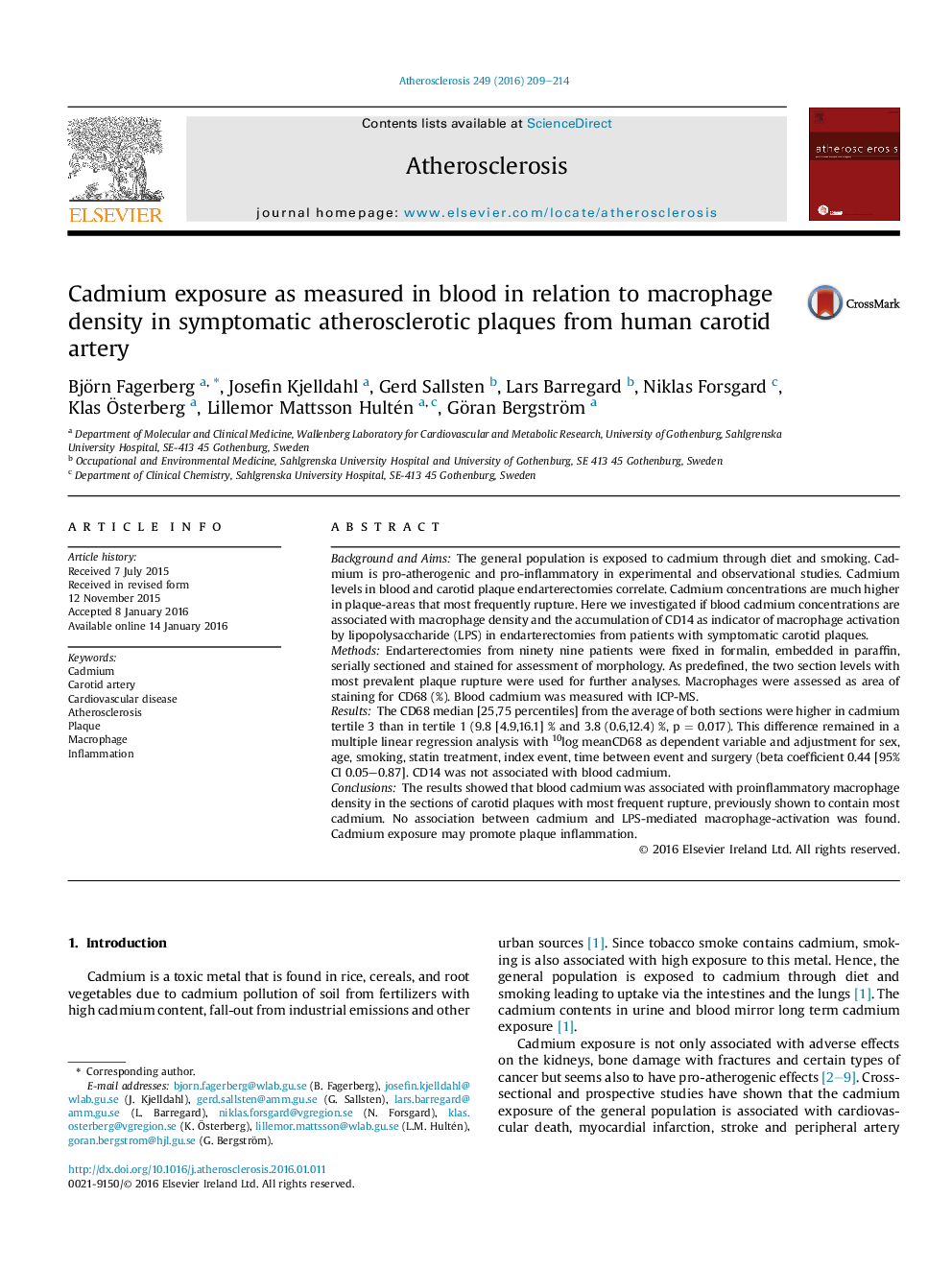| Article ID | Journal | Published Year | Pages | File Type |
|---|---|---|---|---|
| 5943225 | Atherosclerosis | 2016 | 6 Pages |
â¢Symptomatic carotid plaques most often rupture close to the bifurcation.â¢Blood cadmium is associated with CD68 stained areas close to the bifurcation.â¢Cadmium is unrelated to CD14 stained areas as a measure of macrophage activation.â¢Cadmium exposure is associated with accumulation of pro-inflammatory macrophages.â¢These data add to current knowledge of the pro-atherogenic effect of cadmium.
Background and AimsThe general population is exposed to cadmium through diet and smoking. Cadmium is pro-atherogenic and pro-inflammatory in experimental and observational studies. Cadmium levels in blood and carotid plaque endarterectomies correlate. Cadmium concentrations are much higher in plaque-areas that most frequently rupture. Here we investigated if blood cadmium concentrations are associated with macrophage density and the accumulation of CD14 as indicator of macrophage activation by lipopolysaccharide (LPS) in endarterectomies from patients with symptomatic carotid plaques.MethodsEndarterectomies from ninety nine patients were fixed in formalin, embedded in paraffin, serially sectioned and stained for assessment of morphology. As predefined, the two section levels with most prevalent plaque rupture were used for further analyses. Macrophages were assessed as area of staining for CD68 (%). Blood cadmium was measured with ICP-MS.ResultsThe CD68 median [25,75 percentiles] from the average of both sections were higher in cadmium tertile 3 than in tertile 1 (9.8 [4.9,16.1] % and 3.8 (0.6,12.4) %, p = 0.017). This difference remained in a multiple linear regression analysis with 10log meanCD68 as dependent variable and adjustment for sex, age, smoking, statin treatment, index event, time between event and surgery (beta coefficient 0.44 [95% CI 0.05-0.87]. CD14 was not associated with blood cadmium.ConclusionsThe results showed that blood cadmium was associated with proinflammatory macrophage density in the sections of carotid plaques with most frequent rupture, previously shown to contain most cadmium. No association between cadmium and LPS-mediated macrophage-activation was found. Cadmium exposure may promote plaque inflammation.
